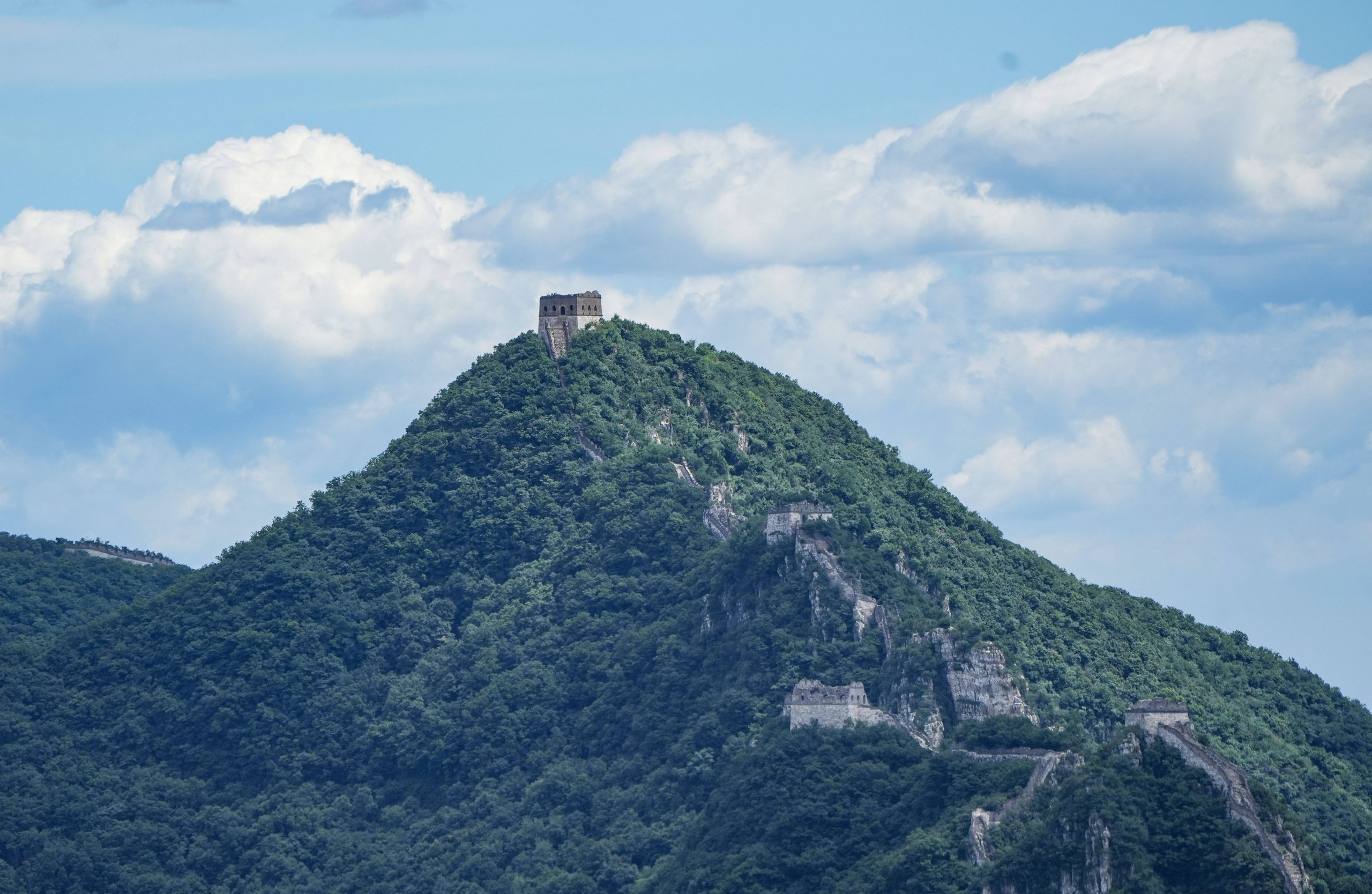The Great Wall of China, a whisper of ancient dynasties, awe and wonder. Situated on many bucket lists, this location is a monument to human accomplishment and a major draw for visitors from all around the world. To be honest, though, visiting the Great Wall usually entails negotiating a sea of people, jostling for pictures, and trying to find a moment of quiet reflection. The desire of seeing the grandeur of the Wall in solitude can seem rather elusive. 😡
Still, do not lose hope! The good news is that one can definitely have a peaceful, crowd-free Great Wall experience. It calls for a change of perspective, a readiness to stray from the well-traveled tourist paths, and a dedication to organization and preparation. This is about connecting with the Great Wall, about losing yourself in its beauty and history free from the distractions of mass travel, not about just seeing it. Think of this as your road map to discover the calm side of this famous wonder.
Traveling Outside the Typical Suspects: Finding the Less-Traveled Routes 🗺️
Badaling & Mutianyu. Clearly the most well-known sections are these two ones, and for good cause. They have great views, easy access, and painstakingly restored walls. Particularly Badaling is often the first (and occasionally only) part many guests view. From Beijing, it’s conveniently reachable with a variety of amenities including cable cars and even a slideway! It also presents that postcard-perfect picture of the Wall. Though still rather popular, Mutianyu offers a somewhat more adventurous experience with its Toboggan run down and is usually regarded as a bit less crowded than Badaling.
But if your main objective is to get away from the throngs, particularly on weekends and during busy season, these areas should be avoided. These are the epicenters of tour bus activity; you will be surrounded by other guests all the times. Consider them as the Great Wall’s primary arteries; vital but sometimes congested.
Rather, focus on the less-traveled routes—the hidden treasures providing a more real and peaceful experience. These are the parts where you can really feel the weight of history, where you can connect with the terrain on a deeper level, and where you can find times of solitude to value the absolute grandeur and size of the Wall.
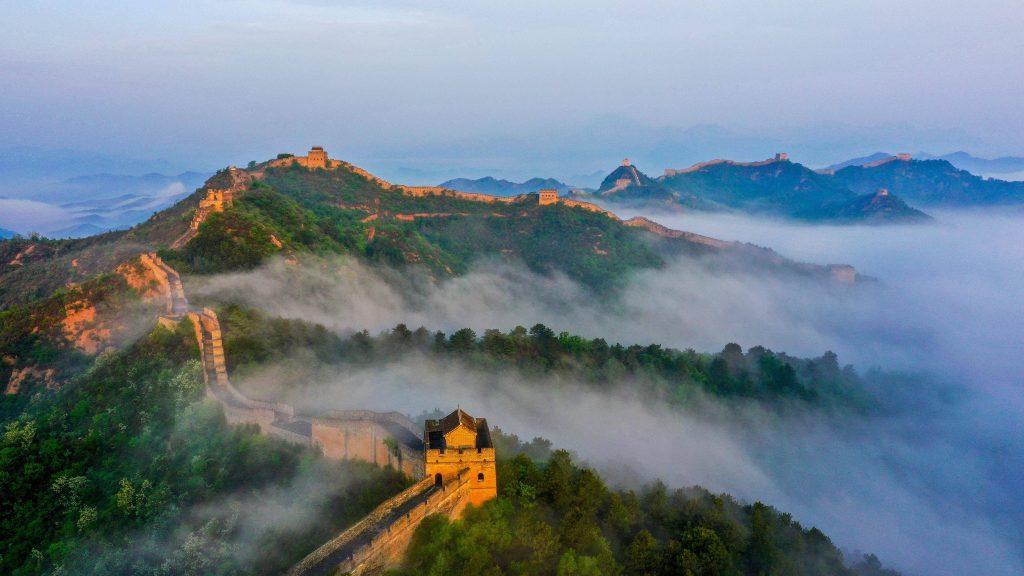
Jiankou, the Wall’s Wild Heart 🫀
Among experienced mountaineers and adventure seekers, Jiankou is a name whispered. It is the opposite of Badaling: wild, unspoiled, and wonderfully tough. This part calls respect, physical fitness, and a good dose of caution—not for the casual visitor. Here the walls are collapsing, the paths are uneven and frequently overgrown, and the hills can be quite steep. In some areas you will be negotiating small passageways and scuttling over loose stones.
Still, the difficulties are exactly what give Jiankou such gratification. This is the most real, unvarnished form of the Great wall. You will be like an adventurer following the footsteps of past soldiers and seeing the unrelenting force of nature recovering the stone. From Jiankou, the views are simply amazing; dramatic cliffs, jagged mountains, and a hard-to-find sense of wild wilderness elsewhere.
Jiankou is only highly advised for experienced hikers due to its demanding nature. You should be at ease with heights, uneven ground, and maybe dangerous circumstances. Not only for safety but also for negotiating the sometimes confusing paths and access to specific areas, hiring a local guide is highly advised. The prize for your work? Unmatched Great Wall experience, a sense of real success, and lifetime of memories. Among those few who have actually seen the wild heart of the Wall is you.
Jinshanling: Travel Through Time to Simatai 🕰️
The climb from Jinshanling to Simatai presents the ideal fusion of difficulty, beauty, and relative solitude. Depending on the exact path, this 10-kilometer (about 6-8 mile) walk is a trip through time highlighting the several architectural styles of the Wall and providing a mix of restored and unspoiled areas.
For photographers, Jinshanling is the dream. Reflecting the several dynasties that helped to build it, its remarkably well-preserved watchtowers display a range of unusual characteristics. Here the walls are rather wide and well-kept, which makes the beginning of the climb comfortable. The people thin out as you get toward Simatai. Though the terrain gets more difficult with steeper hills and some unspoiled areas, the views get even more breathtaking.
Simatai is well-known for its dramatic environment, set atop steep hills that plunge into deep valleys. While the unrestored areas give a glimpse of the Wall’s more rough past, the rebuilt sections have breathtaking views. Simatai offers a night hike option, which is one of its distinctive qualities (check availability and restrictions; this is often seasonal and calls for advance booking). Imagine strolling under a star canopy across the Wall, the old stones softly lit by moonlight. This is a quite amazing experience.
Appropriate for those with a fair degree of fitness, the Jinshanling to Simatai climb is a moderate to difficult one. Depending on your speed and how often you stop to snap pictures, it usually takes 4–6 hours to finish (you will want to stop often). Although you will run across other hikers, especially as you travel farther away from the main access points, the crowds are far smaller than at Badaling or Mutianyu.
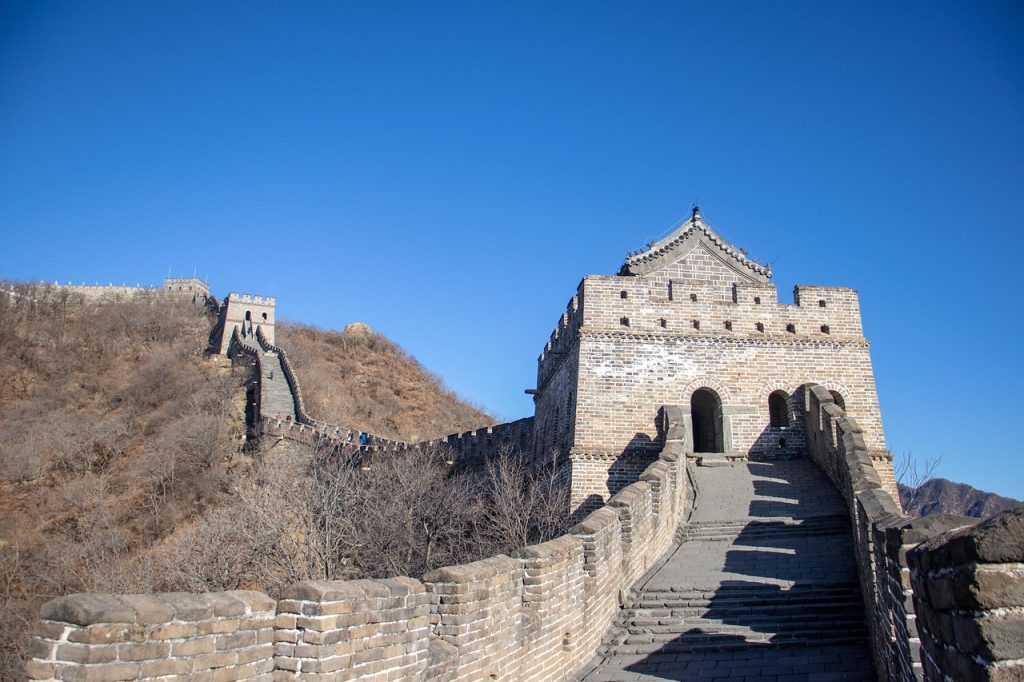
Huanghuacheng: Where the Water Meets the Wall 🌊
From where the ancient construction interacts with a shimmering reservoir, Huanghuacheng presents an original viewpoint on the Great Wall. The lakeside environment of this part is well-known, and occasionally the Wall dips below the water’s surface to produce a striking and odd scene.
For those looking for a reasonably demanding experience with breathtaking surroundings, the hiking at Huanghuacheng is usually regarded as less difficult than Jiankou or Jinshanling to Simatai. The rebuilt areas provide gorgeous views of the lake and surrounding mountains together with well-kept paths. Though caution is advised since some undiscovered areas can be steep and unstable, you can also investigate some.
Riding a boat on the reservoir is one of the most often used pastimes at Huanghuacheng. Although this is a laid-back approach to view the Wall from another perspective, be advised that the boats themselves might get packed, particularly in busy season. If your first concern is solitude, pay more attention to the hiking paths than the boat trips.
Wall and water’s special mix makes Huanghuacheng a visually arresting and unforgettable place. For those wishing to explore a side of the Great Wall away from the more usual mountain settings, this is an excellent choice.
Gubeikou: Notes of Historical Conflict ⚔️
Gubeikou is a historical area where one could practically hear the echoes of past conflicts. Beijing was greatly defended from northern invaders by this neglected section, which clearly has strategic value given its imposing watchtowers and tough construction.
Walking along Gubeikou feels as though one is stepping back in history. The paths are uneven, the walls are falling, and the vegetation is recovering the stone. But precisely this makes it so unique. The fact that you are seeing the Wall in a state of natural deterioration speaks to its age and fortitude.
With some steep hills and uneven ground, the hiking at Gubeikou is rather difficult. Though it’s less rigorous than Jiankou, it still calls for a reasonable degree of fitness and caution. It is a really fulfilling experience because of the absence of people and the sense of historical relevance. Examining the remains of this prehistoric defensive system will help you to connect with the past.
Looking for Hidden Treasures: The Actual Meaning of Off-The-Beaten-Path 💎
Beyond the more well-known (albeit still less crowded) areas, there are even more quiet places just waiting to be found. These are the real hidden treasures, the locations where you can really veer off the tourist path and see the Great Wall in practically total solitude.
Two of such places are Zhuangdaokou and Baimaguan. Usually not accessible via regular tourist paths, these areas can be reached depending on local knowledge and maybe the help of a local guide. Offering a really off-grid experience, they are far removed from the bustle of the more popular areas.
With overgrown paths, steep climbs and undulating walls, the hiking in these places can be difficult. Nevertheless, the benefits are enormous. Among a small number of people who have seen these secret Wall sections, you will be among those who have felt a degree of seclusion and peace only unreachable elsewhere.
Still, it’s important to underline the need of conscientious travel in these far-off places. Respect the Wall; avoid damaging anything; leave no trace of your visit. These delicate sections demand careful preservation. Think about appointing a local guide committed to sustainable tourism who is familiar with the area.
Perfecting the Art of Timing: The Secret to a Crowd-Free Experience ⏰
By learning the art of timing, you can drastically cut your exposure to crowds even in the more well-known parts of the Great wall. Consider it as a strategic game, a dance between you and the tour buses where your constant aim is one step ahead.
Sunrise and Sunset, the Golden Hours 🌅
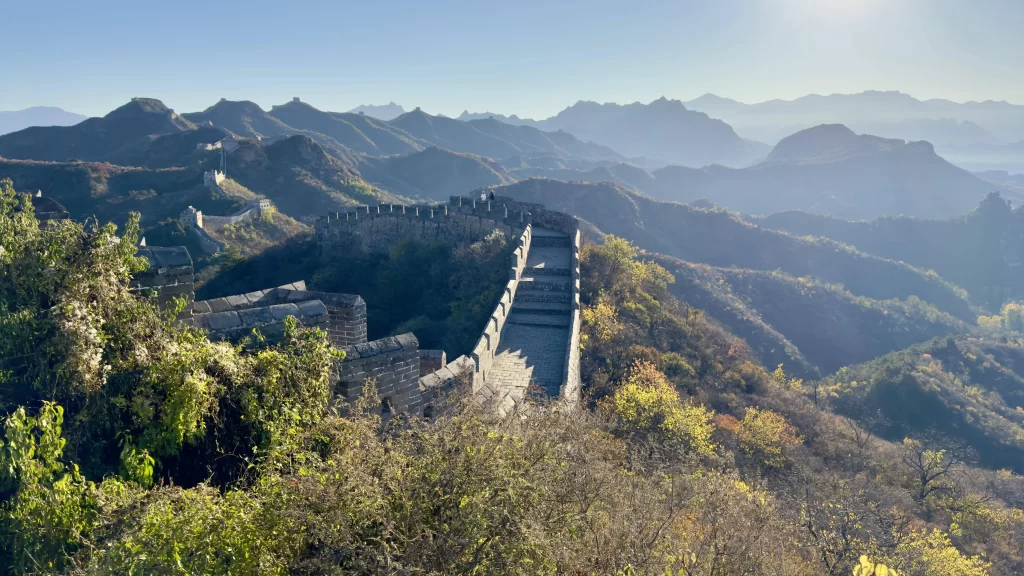
Appropriately named are the “golden hours,” those times just following sunrise and before sunset. They present the best chances for avoiding crowds as well as the most exquisite light for photography.
Arriving at the Wall for sunrise (about 5:30–6:30 AM, depending on the time of year and your chosen location) is perhaps the most successful one. Most tour companies arrive much later in the morning, thus you have a rare window of solitude to see the Wall in all its splendor. The scene is bathed in a warm glow by the soft, golden light, so producing a magical environment. You will plenty of time to snap pictures, tour the watchtowers, and just relax.
Still another option is to stay for sunset. Most tour companies leave by 4 PM, thus the late afternoon and early evening are rather quiet. A dramatic and remarkable scene is created by the long shadows the setting sun casts across the Wall and the surrounding mountains. It’s the ideal way to round out a day of discovery and a time for introspection as the day closes.
Weekends versus Weekdays: A Basic Formula 📅
A weekend visit to the Great Wall differs from a weekday trip in quite amazing ways. The busiest times are weekends, particularly Chinese holidays and spring and autumn, when the throngs swell to their highest. If your schedule lets you, try to visit Monday through Thursday. There will be far less people, thus your experience will be far more pleasant.
Accepting the Off-Season: The Beauty of Solitude ❄️
Though it seems unusual, the off-season (winter, November-February) is a great choice for those looking for solitude even though visiting the Great Wall. There are much less people in the crowd, and the scene gains special beauty. A really wonderful environment is created by snow-dusted watchtowers, clean air, and a feeling of quiet peace.
Still, one should be ready for the chilly conditions. Dress warmly in layers, choose strong, waterproof boots, and look for any section closures brought on by ice or snow. Particularly the more difficult unrestored sections, some may be inaccessible in the winter.
Many visitors can be discouraged by even a rainy day, thus the Wall is left rather empty for those prepared to withstand the elements. Just be sure you use suitable rain gear and exercise extra care on slick surfaces.
Navigating Like a Pro: Embracing Independence and Avoiding the Tourist Trail 🧭
The main causes of the big numbers at the Great Wall are tour buses. Usually arriving at assigned parking spaces, they unload their passengers en masse, generating an unexpected flood of people. You must adopt strategic planning and self-reliance, thinking like an independent traveler to avoid this.
Self-Drive or Private Driver: The Liberty of the Wide Road 🚗
For those looking for a Great Wall experience free of crowds, renting a car or hiring a private driver is a paradigm-shift. This provides the best freedom to reach far-off areas, get early in the morning (before the tour buses), and investigate at your own speed. This is an investment in liberty and peace that lets you design your own schedule free from the limitations of planned trips.
Driving in China can be difficult, particularly around and inside Beijing. The rules of the road might differ from what you are accustomed to and traffic can be heavy. Hiring a private driver is a highly advised solution if you’re not at ease driving yourself. They can negotiate parking, drive, and even offer local area insights.
Spending the Night Close to the Wall: A Head Start on the Throngs 🏨
Staying overnight close to the Wall section you intend to visit is another wise tactic. This gives you a big head start on the throngs by removing the need to depend on buses or cabs in the morning.
For example, Gubei Water Town is a lovely (albeit somewhat touristy) town close to the Simatai section. Staying here lets you beat most guests arriving from Beijing by walking early morning to the Wall. Near other areas of the Wall, there are also several little towns and guesthouses providing more genuine and less packed lodging choices.
The Value of the Long Haul: Crossing the Masses 🚶♀️
Most visitors just walk a little distance along the Wall and cluster around the main points of access. If you have time and are physically fit, think about doing a longer hike. You will run across less people the further you walk.
One shining example of this is the Jinshanling to Simatai walk. Although the first sections close to the Jinshanling entrance might draw some guests, the throngs thin out as you head toward Simatai. You’ll find more solitude the more miles you hike.
One further strategy is to veer from the path of convention. Most guests at Mutianyu, for instance, arrive through the main gate and head east. Think about beginning at the west end and hiking backwards. Particularly in the early morning, you will run across much less people.
Guided Tours: Making Smart Choices and Steering Clear of the Masses 🧑
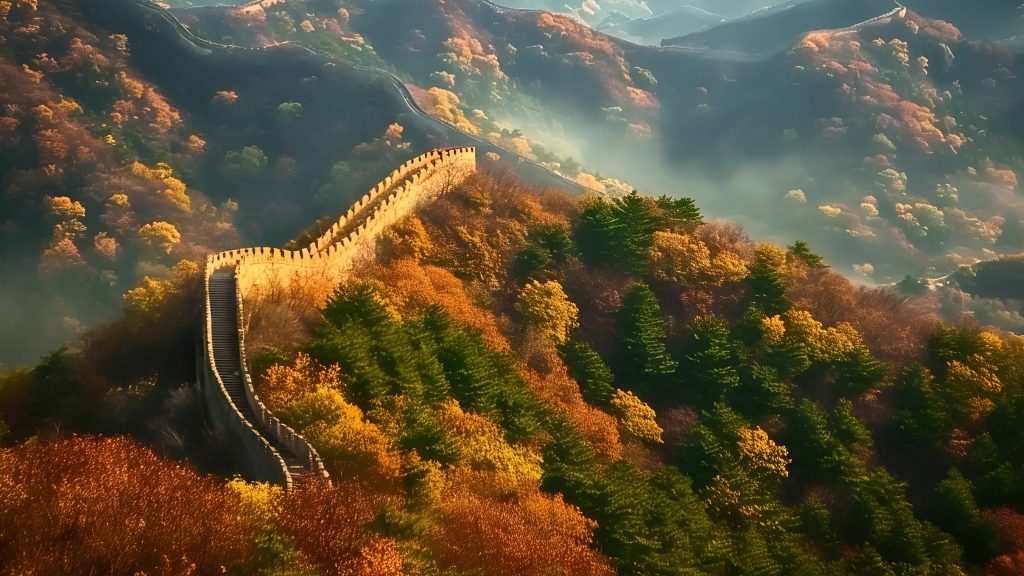
Given your objective is to avoid crowds, the phrase “guided tour” could seem contradictory. On the other hand, a well selected guided tour can really be a useful tool for accessing less crowded areas and acquiring a better knowledge of the Wall’s history and culture.
The secret is to stay away from conventional big-group excursions. Usually following the most popular paths, these are the tours that aggravate the congestion. Rather, hunt for small-group adventure trips emphasizing photography or hiking. These trips give off-the-beaten-path experiences first priority and serve a more discriminating customer base. They can offer important background and context and often have access to less packed areas.
Particularly for getting to “closed” or unrestored areas like Jiankou, local guides can be quite helpful. They can negotiate the terrain, guarantee your safety, and frequently have the required licenses to enter places off-limits to the general public. Selecting a reliable guide who is committed to responsible travel and knowledgeable about the Wall is absolutely vital.
Basic Advice for a Responsible, Safe, and Easy Hike ✅
There are some very important pragmatic issues to keep in mind before starting your Great Wall adventure. These suggestions will support ethical travel as well as help to guarantee a seamless, safe, and fun experience.
Look for closures and restrictions on some areas of the wall, especially the more remote or neglected ones. This could result from other circumstances, maintenance, or the weather. Before leaving, always find the most recent information on the official websites or speak with local guides. For example, Simatai’s night hike might be seasonal and usually calls for an advance reservation.
Pack Appropriately: Great Wall weather is erratic and conditions there can change quickly. Stow layers of clothing to fit different tempers. Particularly if you are walking over unspoiled terrain, strong hiking shoes are absolutely vital. Bring lots of water—at least two liters per person—snacks to maintain your energy levels, sunscreen, a hat, and sunglasses to guard against the sun. Another wise concept is a little first-aid kit.
Respect the Wall: Our obligation is to preserve the priceless historical monument known as the Great Wall for next generations. Steer clear of damaging any part of the Wall, particularly underrestored areas. Never leave any trash behind, carve your initials on the stones, or climb on delicate constructions. Bring all of your trash with you and get it disposed of correctly.
Though your aim is to avoid crowds, you could still run across other hikers along the path. Particularly in tight passages or on steep hills, be polite and respectful. Steer clear of too noisy behavior and let faster hikers pass.
Learn a Few Basic Mandarin Phrases: Although many people in tourist areas speak some English, knowing a few basic Mandarin phrases can be quite beneficial—especially if you’re straying from the path. Simple words like “hello” (你好, nǐ hǎo), “thank you” (谢谢, xièxiè), and “how much?” (多少钱, duōshao qián) can really make a difference.
Download Offline Maps: In some portions of the Great Wall, cell phone service can be erratic. Download offline maps of the area you intend to visit to make sure you can get about even in the absence of signals. Useful are apps including Maps.me and Google Maps (with downloaded offline areas).
Be Aware of Your Surroundings: Particularly on areas under restoration, consider the terrain. Look for loose stones, uneven ground, and sharp drop-offs. Whenever at all possible, stay on designated paths; avoid unnecessary risk.
Particularly if you are hiking alone or heading to a remote area, let someone know where you are going and when you hope to be back. This is a fundamental safety measure that, in an emergency especially important.
Make sure you have enough travel insurance covering medical emergencies, evacuation, and other unanticipated events.

